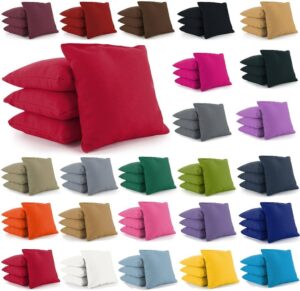Everything You Need to Know About Textile Recycling

Chances are, you’re aware of the importance of textile recycling. But have you ever considered why it’s such a crucial practice? What qualifies as “textiles,” exactly, and what can be recycled? In this guide, we’ll cover all the essentials you need to know in order to integrate textile recycling into your lifestyle. After reading, you’ll see your old jeans and t-shirts in a whole new light.
Textile recycling is a simple and effective way to support the environment. Knowing that your fabrics and waste clothing are being repurposed instead of contributing to landfill waste is a rewarding feeling. If you’re committed to making a positive impact through your fashion choices, read on for valuable insights and practical tips.
Reducing Fashion Waste: Which Items Can You Recycle, and How?
There are various ways to approach textile recycling. You can choose to donate your clothes and other textiles to charity, or you may opt to repurpose them for personal use. Upcycling is a popular option, allowing you to create new products such as bags or blankets from old items. In some cases, downcycling may also be an appropriate choice, such as transforming a cotton shirt into a cleaning rag.
When it comes to recycling, virtually any clothing item, including shoes, belts, purses, and backpacks, can be sorted and repurposed at the end of its life cycle. Textile recycling involves breaking down the materials into fibers, which are then used to create new products, giving each item a sustainable second life.
If you’re feeling creative, upcycling allows you to transform old clothing into something new and unique. By making minor adjustments, you can create entirely new items. For instance, your concert t-shirts can be turned into a one-of-a-kind skirt, and the leftover material can be recycled. With a little imagination, textile recycling can be a fun and rewarding way to reduce waste and contribute to a more sustainable future. Increasing temperature has boosted awareness about clothing and sustainability to save the planet from natural calamities like global warming, water wastage, earthquake, and more.
Why Textile recycling is different from selling used clothes?
When it comes to textile recycling, it’s important to remember that this option is typically best suited for clothes that are no longer wearable. If your clothing is in good condition, donating it to organizations such as Goodwill or the Salvation Army can be a great way to support a community cause. While selling clothes at consignment or thrift stores may yield a small profit, you may have limited control over the resale price or whether your items sell at all. Recycling your clothes, on the other hand, allows you to ensure they’re put to good use or repurposed rather than simply moved to a new location for storage.
Repurposing clothing is a growing trend and a green solution to the problem of textile waste. With some creativity and craftiness, you can give a garment a “second life,” resulting in a unique and one-of-a-kind piece. In cases where clothing items are no longer wearable, recycling them into cleaning cloths or insulation fibers can also be a practical option. Furthermore, textile recyclers can transform old clothes into new products like rugs, reusable shopping bags, or carpets, reducing the environmental impact of fashion waste.
Where to Locate Textile Recycling Centers?
If you’re seeking a textile recycling center in your area, there are typically several options available. When searching for textile recycling programs, it’s important to specify the types of items you want to recycle, such as synthetic fabrics like linen fabrics, or other materials. This can help you find more relevant results.
In many cases, you can find donation receptacles located in parking lots near major department stores like Target or Walmart. These drive-up donation sites offer a convenient way to drop off unwanted items, which are then sorted and either donated to benefit a non-profit, sold for resale, or recycled into something new.
If you prefer to avoid the hassle of contacting your local government, you can search online for textile recycling organizations. Many websites list companies that recycle textiles in every state and major city across the United States, as well as in other countries around the world.
In the event that there are no textile recyclers in your area, consider contacting manufacturers directly to see if they have a recycling program available for their products.
Conclusion
The textile waste crisis is growing rapidly, and if we don’t take action, it will only worsen. The amount of waste we produce will increase by 70 percent by 2030. However, there are numerous ways that you can contribute to reducing your environmental footprint and preventing more waste from piling up in landfills. Donating clothes to thrift stores, selling them online through platforms like ThredUp or Poshmark, or giving them away for free on sites like Craigslist or Freecycle are just a few of the options available.
If you have old clothes lying around that you no longer use, it’s a great idea to recycle them. One of the best ways to do this is by donating your unwanted clothing items to charities that accept donations. You can take them to the nearest charity shop or arrange for a representative of the charity to pick them up from your home. Another option is to upcycle old clothes by turning them into something else, such as rags for cleaning purposes or stuffing for toys, pillows, and other furniture items. With a bit of creativity, you can make a significant impact on reducing the world’s textile waste.






